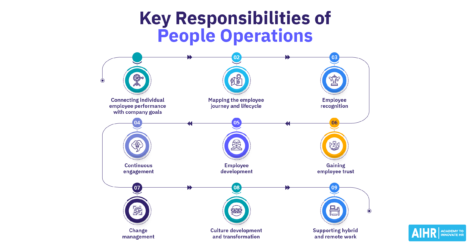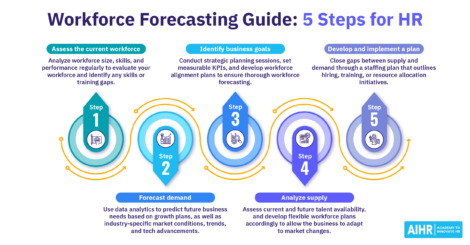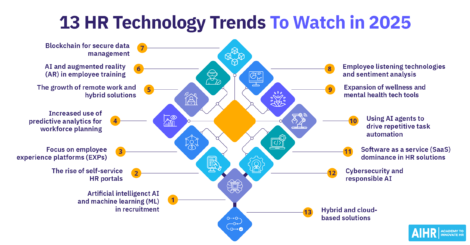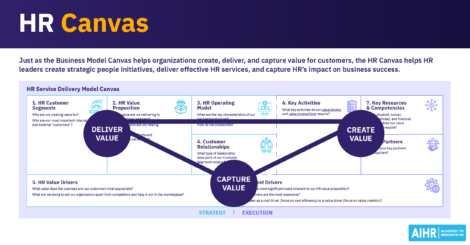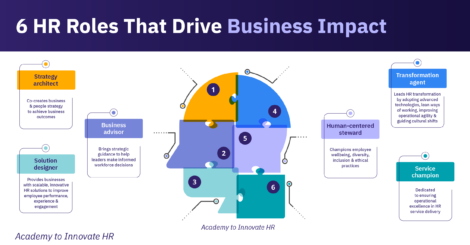People and Culture vs. HR: What’s the Difference?
You may have heard about tech giants like Google and Apple embracing next-level, human-centric company cultures. As businesses evolve, so does HR – this means the focus on People and Culture is now becoming more mainstream.
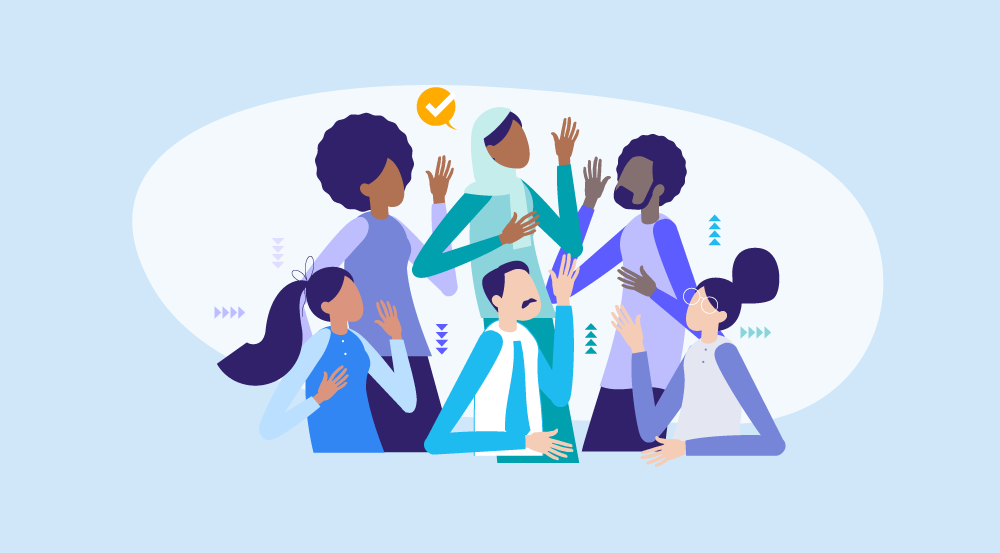
The People and Culture function in HR is becoming increasingly prominent. The boundaries between the professional and personal are often blurred, and companies are investing in building environments that prioritize employee wellbeing, stimulate creativity, and encourage innovation.
A strong company culture is crucial for anchoring people to business success. Gallup believes organizational culture is “a force multiplier” for the most important outcomes and can be a powerful differentiator for a company. Yet, only 20% (on-site) to 23% (remote) of U.S. employees feel connected to their company’s culture.
The rise of the People and Culture department presents an exciting opportunity to bridge the gap between business objectives and employee experience, creating more fulfilling work that ultimately drives organizational success.
Contents
What is People and Culture?
HR vs. People and Culture: What are the differences?
The role of the Head of People and Culture
How to build a People and Culture department
Key functions of the People and Culture department
The role of the People and Culture team
People and Culture strategies for HR professionals
3 company examples of successful People and Culture teams and practices
What is People and Culture?
People and Culture is a new name for HR that represents a major paradigm shift. The traditional HR department deals mainly with administrative tasks, while People and Culture focuses on a holistic approach to managing an organization’s workforce.
This approach emphasizes the link between fostering a positive work environment and employee wellbeing for high-performance outcomes. As such, more organizations are prioritizing People and Culture to create a workplace where employees feel valued, engaged, and empowered to contribute their best.
This shift goes beyond rebranding and optics – it signifies a deeper commitment to human-centric business operations, where people come first. KSL Advisors’ Strategist and CEO Kimberly Samons says, “When you hear the term ‘human resources’…it’s like a widget, a thing”.
“When you use ‘people,’ it’s much more intimate and understanding; there’s a sense of relationship and community. It signifies something about the company and how it values the people equation within the overall context of success in the organization.”
The role of People and Culture department
Change leadership expert Seth Kahan predicted in 2015 that management would “transform twice in the next 10 years.” He believed that “management 2.0” would arrive within five years “on a grand scale, completely changing today’s hierarchical leadership protocols to decentralized, self-organizing, and rapid prototyping because of its ability to stabilize and dramatically grow organizational profit.”
Kahan appears to have been correct, considering the shift from traditional HR functions to people and culture. The latter’s goal is to achieve higher levels of employee engagement, satisfaction, and productivity and to align people strategies with the organization’s broader business goals.
The People and Culture department’s main priorities now include:
- Employee experience: Creating a positive and engaging environment where employees feel valued, supported, and motivated.
- Organizational culture: Building a distinctive company culture aligned with business goals and shared values, which appeals to A-players.
- Total wellbeing: Supporting good physical, mental, and emotional health enhances employee satisfaction and productivity and reduces burnout.
- Talent development: Investing in ongoing employee growth and development through training, coaching, and mentorship.
- Supportive leadership: Fostering leadership qualities at all levels to reinforce the company’s positive culture and build a robust management pipeline.
- Diversity, Equity, Inclusion, and Belonging (DEIB): Fostering a working environment that nurtures inclusivity and tolerance so everyone feels included and respected.
- Strategic business partnerships: Instead of a siloed approach, focus on aligning people strategies with overall business objectives to drive performance.
HR vs. People and Culture: What are the differences?
While a People and Culture department includes traditional HR functions, it’s important to note that it goes beyond those responsibilities by creating positive employee experiences and a strong company culture.
It also places a far greater emphasis on achieving organizational goals and obtaining higher performance through a happier and more engaged workforce.
Focus
Mostly transactional and administrative tasks include payroll, ensuring labor law compliance, and employee record maintenance.
Creating a positive employee experience, fostering a strong company culture, and aligning people strategies with business objectives.
Primary functions
- Recruitment
- Onboarding
- Compensation
- Benefits administration
- Performance management
- Employee relations.
- Talent acquisition and management
- Organizational development
- DEIB
- Building a strong employer brand
- Developing leadership talent
- Driving employee satisfaction.
Approach
Typically reactive, often responding to issues as they arise.
More proactive and strategic, anticipating future needs and trends.
Leadership role
Often seen as operational and administrative.
Serves as a strategic advisor, influencing business decisions and driving organizational change.
Business objectives
Supporting core HR functions and ensuring compliance.
Contributing to overall business success by aligning people strategies with organizational goals.
Culture
Often siloed within the organization, with a focus on internal operations.
Collaborative and integrated with other departments, acting as a strategic business partner.
Employee engagement
Traditionally viewed as a secondary concern.
Central to the function, with a focus on building a high-performance culture.
Metrics
Typically focused on efficiency metrics such as time-to-fill roles, turnover rate, and cost per hire.
Emphasizes people-centric metrics such as employee satisfaction, engagement, retention, and performance outcomes.
The role of the Head of People and Culture
Every key business function within a large organization needs a director to drive operations and be accountable for outcomes. In the case of People and Culture, this role falls to the Head of People and Culture – a strategic leader responsible for aligning HR functions with business objectives.
This strategic role sets the tone for the department and plays a pivotal role in the following areas:
Strategic planning
The Head of People and Culture is responsible for translating organizational goals into actionable people and culture strategies. This includes aligning the talent needs of various business units, fostering a culture that supports the company’s objectives, and developing employee engagement initiatives that lead to higher productivity.
Change management
Given that a dedicated People and Culture role is still relatively new in mainstream business, the Head of People and Culture may be required to spearhead change initiatives and cultivate a culture of continuous improvement. This requires specialized communication and change management skills.
Talent management
Attracting, retaining, and developing top talent is at the core of the People and Culture function. The Head of this department also oversees talent acquisition strategies and employee development programs. Additionally, they ensure a rewarding work environment to foster high retention rates.
Employee advocacy
The Head acts as a bridge between leadership and employees. They champion employee needs, listen to and address concerns, and ensure open communication channels for constant feedback and improvement.
Cultural stewardship
The Head also plays a crucial role in shaping, promoting, and preserving the organization’s desired culture. This involves implementing initiatives at all levels that clarify, reinforce, and reward behaviors that align with company values.
How to build a People and Culture department
Rebecca Christianson, CEO of Thriving People Consulting, says, “Employee experience is treating your employees like important customers by ensuring their experiences at work are human-centered, use the latest digital technologies, and are personalized, compelling and memorable.”
To achieve this, companies need dedicated People and Culture roles. Assigning these responsibilities to general HR staff often results in diluted focus, neglecting critical areas like employee engagement. For example, an HR generalist juggling payroll and engagement initiatives will likely prioritize urgent payroll matters. This leaves less time and attention for cultivating a positive workplace culture.
5 steps to build a new People and Culture department
When you create specialized roles, you ensure every aspect of People and Culture receives the dedicated focus, expertise, and time it deserves. Here are a few critical steps to build your new People and Culture department:
- Define your vision: Clearly articulate your new department’s mission, values, and goals. Make sure your blueprint is aligned with the overall business strategy.
- Conduct a needs assessment: Evaluate your organization’s current HR functions, identify gaps, and determine the resources and skills you’ll need to plug them and build your new department.
- Build a high-performance team: Upskill existing HR staff and/or recruit new candidates to create a team with a diverse skill set. Consider roles such as:
- Talent Acquisition Specialist/Onboarding Specialists: Experts at attracting, hiring, and onboarding top-class talent.
- Employee Engagement Manager: Responsible for driving initiatives that fuel employee satisfaction and retention.
- Learning and Development (L&D) Coordinator: Tasked with implementing ongoing employee growth and improvement at all levels through training programs, mentorship, and coaching.
- Diversity and Inclusion Officer: Responsible for promoting an inclusive workplace culture.
- Wellbeing Coordinator: The organization’s champions of employee physical, mental, and emotional health and wellbeing.
- People Analytics Specialist: Responsible for monitoring and leveraging data to assess employee engagement, performance and other key metrics for informed and strategic decision-making.
- Redefine roles and responsibilities: Clearly outline the new team’s roles and responsibilities to ensure clear collaboration and maximum efficiency.
- Focus on culture building: Implement initiatives to create a supportive, inclusive work environment, such as employee recognition programs and open communication channels. Determine how to support and sustain these initiatives long-term.
- Measure and evaluate: Establish key performance indicators (KPIs) to track the department’s success and make informed, data-driven adjustments.
Key functions of the People and Culture department
According to Orion Talent CEO Sarah Peiker, “The primary reason many businesses are converting their HR practices into People and Culture is a wide disconnect between business strategy, long-term goals, and how HR works.”
“HR is a necessary part of any business but has not traditionally been viewed as a deeply integrated, strategic function of business operations—an interesting truth considering its influence.”
To bridge this gap, People and Culture departments must expand their portfolio of functions to include:
- Talent acquisition and onboarding: Attracting, hiring, and integrating A-grade employees into the organization.
- Employee development and learning: Empowering employees at all levels to grow, develop new skills, and take their careers to the next level.
- Performance management: Setting goals with various business units, providing feedback to managers and employees, and evaluating employee performance on an ongoing basis.
- Employee relations: Managing employee concerns, conflicts, and grievances to maintain a positive work environment.
- Compensation and benefits: Developing and managing attractive compensation and benefits packages (including financial and non-financial incentives) to reward your employees competitively.
- Organizational culture and engagement: Establishing a vibrant and collaborative organizational culture that boosts employee satisfaction and engagement.
- DEIB: Creating a workplace where every team member feels valued and respected and where different perspectives are not only welcomed but celebrated.
- Employee wellbeing: Showing your dedication to the physical, mental, and emotional health of your employees by providing support through various programs and initiatives.
- People analytics: Using data to drive strategic decision-making and measuring the impact of People and Culture initiatives.
- Employer branding: Building a strong employer reputation by encouraging employee advocacy to attract top talent.
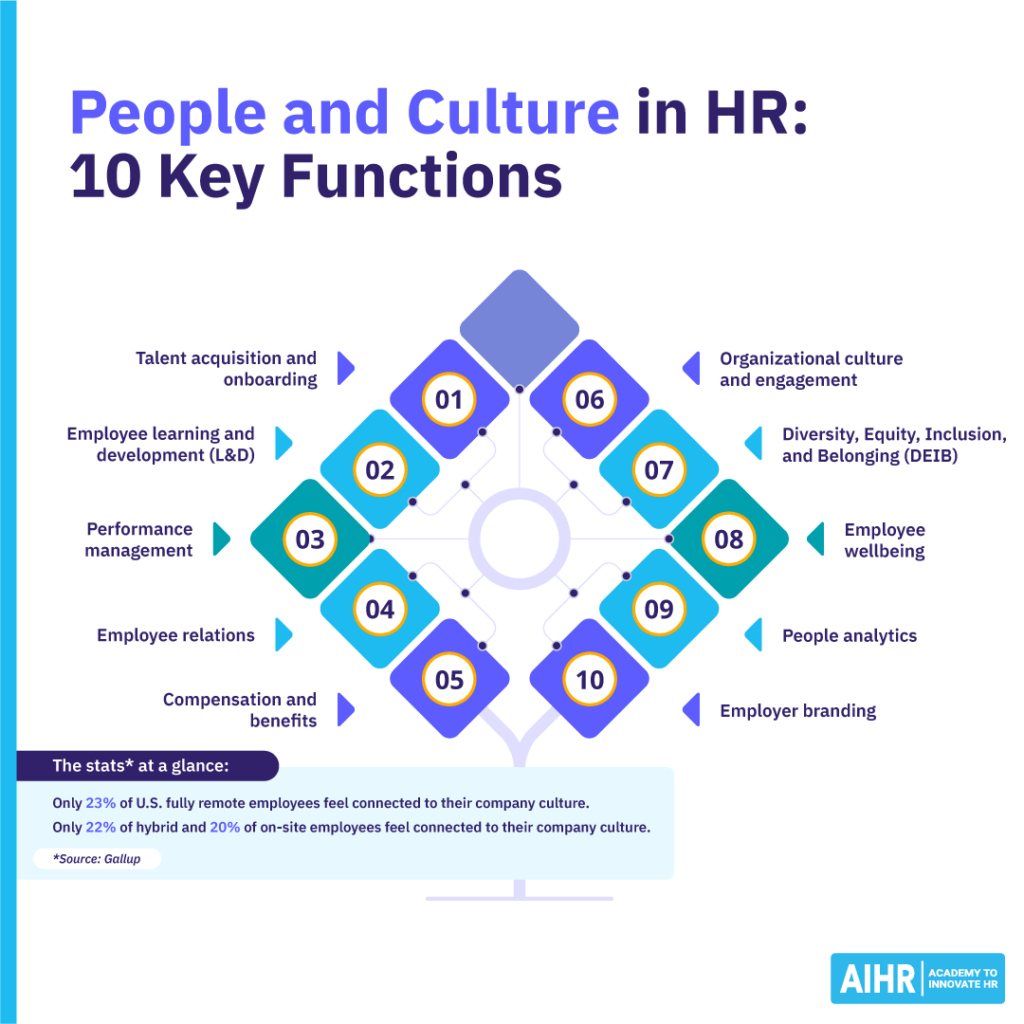
The role of the People and Culture team
The People and Culture team is responsible for cultivating a thriving work environment that empowers employees to reach their full potential. By aligning people’s strategies with business objectives, they drive organizational success.
Lynda Gratton, Professor of Management Practice at London Business School, says, “Putting your people at the heart of your firm’s business and people strategy will help your organization thrive. This means defining and implementing a culture and processes that promote energy and human potential.”
Your People and Culture team will shape company culture. They can influence how employees feel and perform, ultimately impacting the organization’s overall performance and reputation. Your team is able to do this by boosting morale via recognition programs, wellness initiatives, and social events. The People and Culture team also drives employee engagement by promoting transparent communication and establishing effective feedback mechanisms.
Additionally, a good People and Culture team is dedicated to empowering employees with the tools and support they need to be resilient amid ongoing challenges and transformations. This includes promoting adaptability, experimentation, and learning lessons from setbacks.
Last but not least, the team enhances employer branding by devising innovative strategies to attract and retain top talent. Their focus on employer branding and storytelling helps the organization stand out as an employer of choice in a competitive hiring market.
People and Culture strategies for HR professionals
Here are five strategies you can employ to develop your People and Culture initiative:
1. Cultivate a diverse and inclusive workforce
DEIB forms the foundation of an organizational culture that includes and respects all employees. As an HR professional, you should focus on implementing policies and programs that promote DEIB at all organizational levels.
Steps to take:
- Develop DEIB policies: Create clear policies that outline your organization’s commitment to diversity and inclusion.
- Practice diverse hiring: Implement strategies to ensure diverse candidate pools and fair, inclusive hiring practices.
- Establish employee resource groups (ERGs): Support the formation of ERGs to foster a sense of community and belonging among employees from various backgrounds.
- Implement inclusive leadership training: Equip all your leaders with the necessary hard and soft skills to create inclusive environments.
- Adopt a data-driven approach: Track DEIB metrics to measure progress and identify areas for improvement.
2. Foster employee wellbeing and engagement
To foster a high-performance culture, you must prioritize employee wellbeing. Focus on initiatives that boost employee satisfaction, engagement, happiness, and overall wellbeing.
Steps to take:
- Implement flexible work arrangements: Investigate options like remote work, flexible hours, and compressed work weeks.
- Provide mental health support: Give employees access to mental health resources and promote open conversations about mental wellbeing.
- Introduce wellness programs: Launch wellness initiatives such as fitness challenges, nutrition workshops, and stress management programs.
- Regularly recognize and reward top performers: Celebrate employee achievements and contributions with a recognition and reward program.
- Distribute regular employee feedback surveys: Gather employee feedback regularly to pinpoint areas for improvement and measure the impact of your wellbeing initiatives.
3. Build a leading employer brand
The stronger your employer brand, the greater your ability to attract and retain top talent. That’s why, as an HR professional, you should develop strategies to position your organization as your industry’s employer of choice.
Steps to take:
- Define your employer value proposition (EVP): Clearly articulate the unique value your company offers its employees.
- Engage in employee advocacy: Encourage employees to share their positive experiences about the company, in writing or on video.
- Maintain an active social media presence: Use storytelling on social media platforms to showcase your company culture and values.
- Roll out employee referral programs: Incentivize employees to refer qualified candidates for vacancies, either with monetary or non-monetary rewards.
- Optimize candidate experience: Create a positive experience for job applicants and new hires, starting from their very first engagement with you.
4. Drive organizational agility and change
You must be responsive and agile to support organizational changes effectively. That’s why it’s crucial to prioritize strategies that build a resilient workforce in your HR department and across your organization.
Steps to take:
- Implement effective change management: Implement strategies to minimize resistance and maximize employee buy-in ahead of major organizational changes.
- Upskilling and reskilling: Invest in employee development to build future-ready skills and ensure your organization keeps pace with innovation.
- Create agile work environments: Foster a culture of courageous experimentation and innovation.
- Ensure effective communication: Maintain open and transparent communication throughout change initiatives.
- Incorporate employee feedback: Involve your employees in the change process and incorporate their input.
5. Hire for attitude, develop skills
Focus on finding candidates who align with your company’s culture and values instead of relying solely on technical skills and qualifications. Invest in training and development to equip employees with any skills they may lack.
Steps to take:
- Conduct behavioral-based interviews: Don’t focus solely on qualifications and expertise. Assess candidates’ attitudes, values, and work ethic.
- Assess cultural fit: Evaluate how well candidates align with the company culture.
- Analyze skills gaps: Identify skills deficiencies and develop your training programs accordingly.
- Ensure ongoing development: Provide opportunities for your employees to learn new skills and advance their careers.
3 company examples of successful People and Culture teams & practices
Example 1: Cisco Systems
Cisco Systems consistently receives ‘employer of choice’ awards and placed second in Great Places to Work. This is due to its commitment to DEIB and building a company where all employees feel safe to fully participate and thrive.
Gloria Goins, Chief Diversity, Equity, and Inclusion Officer, explains: “Our vision at Cisco is to be the global leader in building diverse, equitable, accessible, and resilient communities to accelerate business growth and to fulfill our purpose of powering an inclusive future for all.”
Cisco connects its purpose with efforts to improve DEIB across the organization through its ‘Conscious Culture’ strategy, which outlines the three elements of its ecosystem: environment (a diverse, inclusive environment that positively impacts people, society, and the planet), characteristics (company beliefs and behaviors), and experience (culture as experienced directly through work, team, and leaders).
Example 2: HubSpot
Entrepreneur Inc., Forbes, and Glassdoor have named HubSpot ‘Best Place to Work’ thanks to its employee-centric culture. It constantly updates its Culture Code document, which sets out the company’s shared beliefs, values, and practices.
HubSpot offers its employees ample opportunities for learning and development, including tuition reimbursement and internal training programs. This focus on personal and professional growth has increased employee engagement and motivation.
Example 3: Netflix
Netflix has built a reputation for its novel approach to HR, emphasizing freedom in decision-making, over-controlling management, and rigid policies. It also gives employees unlimited vacation days, does not require approval on company expense spending, and does not conduct formal performance reviews.
The company’s People Operations team prioritizes hiring exceptional people to the point where it gives adequate performers generous severance packages to leave. Netflix has cultivated a high-performing and innovative culture by focusing on acquiring A-players and creating clear parameters for autonomy and performance.
Patty McCord, a former Chief Talent Officer at Netflix, explains: “If you’re careful to hire people who will put the company’s interests first, who understand and support the desire for a high-performance workplace, 97% of your employees will do the right thing,”
To sum up
McKinsey & Company advisor Hugo Bague once noted: “It’s critical that HR professionals acknowledge that business performance is influenced by far more than systems and processes within an organization.”
He believes that to achieve exponential value, an organization’s vision and performance goals must be supported by behaviors and values that create a culture aligned with its operating philosophy and strategy. This highlights the importance of People and Culture.
“Unless the HR function ensures that its resources focus on these aspects at an organizational level as well as at the individual process level, further examples of organizations failing to deliver on their promises through a lack of cultural alignment will continue to persist,” said Bague.
Learn more
Related articles
Are you ready for the future of HR?
Learn modern and relevant HR skills, online







